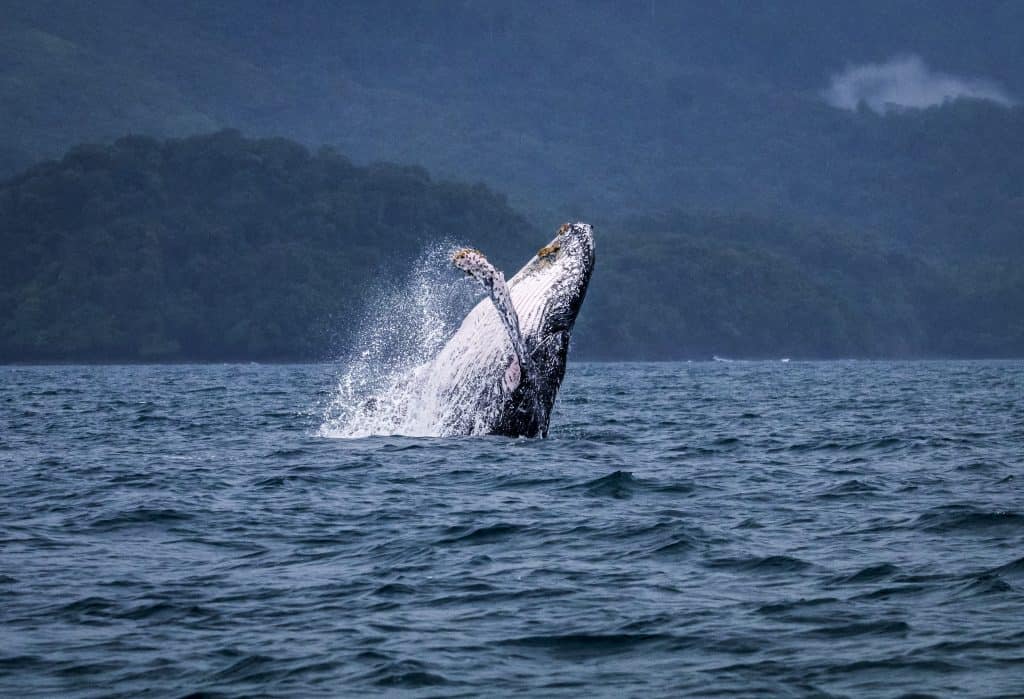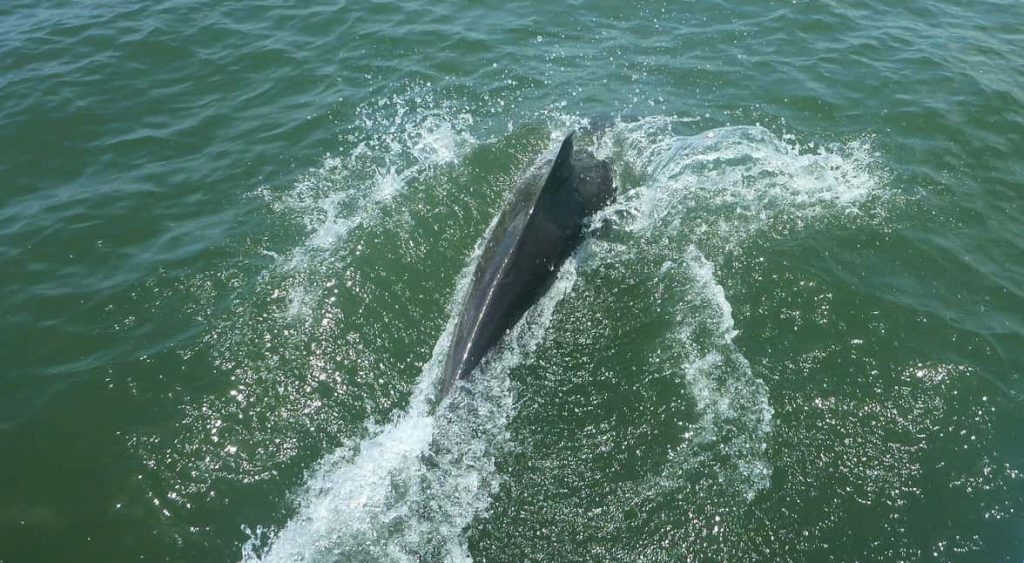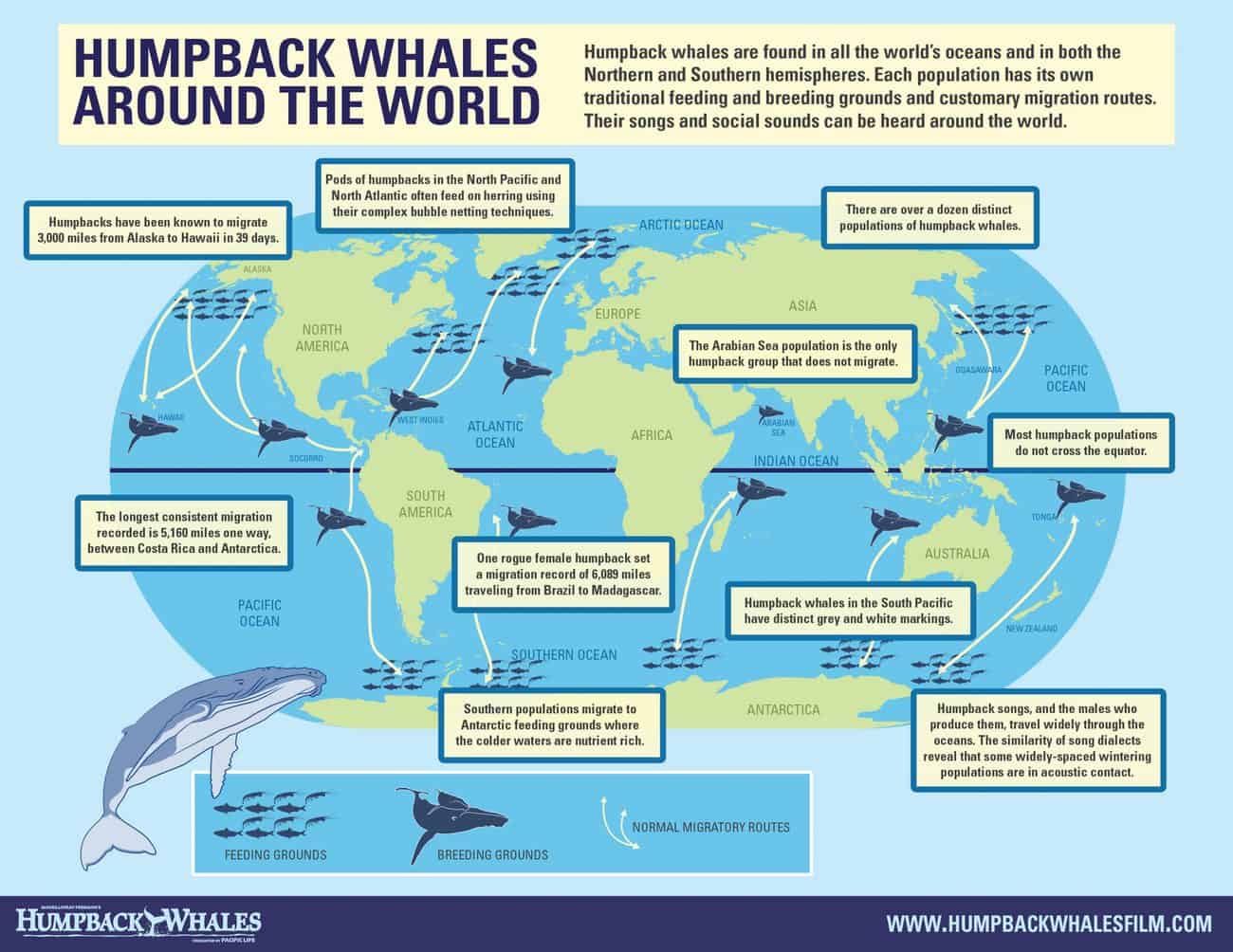Everything begins on the last days of the year and goes on until March when humpbacks can be found in the Antarctic and the Chilean chilly coasts where they feed and fill their fat deposits to have the energy for their extraordinary journey, during the trip, the adults practically do not feed.
Humpback whales migrate from the South and the North Pole to the Panama Pacific coast to breed and give birth and even teach how to swim their babies in the warm waters of our country. Many of these whales are Panamanian.
The Megaptera Novaeangliae, the scientific name of this whale species, means “giant wings,” and refers to the large fins of the humpback, which can be as long as a third of the body of the whale. It’s estimated that each year more than 2,000 migrate from Antarctica and from Alaska to Panama.
These cetaceans from the south boast the longest migration among mammals, as they travel more than 8,000 kilometers to their final destination. They are one of the only whale migrations crossing Ecuador.
Once the whales from the South have left the Panamanian coasts, whales from the North arrive. There are even years where both groups meet and possibly mate with each other.
Humpback whales females may have a length of up to 17 meters long, while males can measure up to 15 meters. These animals reach weights up to 36 tons and live on average 50 years.

When can you see whales in Panama?
About 2,000 whales migrate from Antarctica and arrive at our coast between July and October although they still could be seen in November. However, August and September are the best time to observe humpback whales in Panama.
Meanwhile, his Arctic North relatives preferred coming to Panama from January to March. This group of whales is smaller than that of their southern cousins, just a few hundred. Panama is one of the two only places in the world to receive humpback whale populations from both poles!
Why does Panama be good for whales?
Panama shallow coasts are ideal for humpback whales to breed and give birth because they are warm waters without natural predators, like orcas. They love sheltering the nearby areas of the islands close to the coast.
Calves are born with very little body fat since the pole’s water is extremely cold for them. The babies can consume as much as 600 liters of milk a day, while the mothers sing lovely lullabies to them. Also in this area, they can feed freely and safely to be healthy and store the fat needed for the journey towards the poles and withstand the cold temperatures of the zones and gain enough strength to escape from predators.

Over 30 species of whales and dolphins have been documented in Panama’s waters, offering whale watchers the opportunity to observe many different species and other wild marine animals like sea turtles and thousand migratory birds.
The coastal route has other kinds of dangers such as humans, fishing net, and irresponsible tourism which make them vulnerable. Every year hundreds of them are beaten by boats and others get tangled up in the fishermen’s nets.

Where do Whales can be observed in Panama?
Panamanian islands are the privileged places where humpback whales stay can be seen. Coiba, Cebaco, Iguana, Taboga Islands, the Las Perlas archipelago, and Chiriqui Gulf are preferred by tourists, scientists, and locals to enjoy the migration of the whales and their calves.
In Veraguas, specifically Cebaco Island, excursions are made to see the “humpback” as this whale species. It is the third-largest island in Panama and is located on the border of two of the most important protected areas of Panama, making it one of the favorite places for whales.
Coiba Island, located in the south of Veraguas, is one of the world’s largest marine parks, with an area of 2,701 km2. There exists a research center for this cetacean. On this island, people can also enjoy the presence of killer whales, spotted tropical dolphins and bottlenose dolphins, sharks, and many other marine wild animals.
Iguana Island is another favorite place for whales to give birth to their calves. Around the island, you will find the largest coral reef of the Gulf of Panama and of course a large number of humpback whales like nowhere else.
They can also be spotted in San Miguel, Taboga, Contadora, Panama Bay, Gulf of Chiriquí, Gulf of Montijo, and Chocó.

What precautions should be taken to visit Whales?
During the breeding season of the humpback whale, many tourists and scientists arrive in Panama to enjoy the moment. Panama is a country that promotes the creation of whale sanctuaries and in which respect for marine species, and especially those endangered, is highly valued.
The whale watching season is very important for us as we use these months to raise awareness of the needs of the cetaceans and promote the dissemination of information about their protection.
Humpback whales are very easy to see as they are kept for long on the surface of the sea. However, due to the large number of people arriving at the isthmus, visitors should follow basic rules when they are near a humpback whale:
- Avoid getting too close to a female with young, although they are very tranquil, nobody knows what a mother will do to protect her calf.
- When you come to 300 meters distance from the whale, it is important to reduce the speed or even stop because the noise disturbs them.
- Never go 200 meters close to them. It is impossible to predict in which direction they will swim and you can collide with them.
- The safest way to approach them is in a parallel direction where you see them swimming. Never come close to them in a direct manner from the front or the back.
- Keep quiet at all times.
- Never try to swim or dive close to them.
- The whale watching time should not exceed 30 minutes.
- Do not throw rubbish into the sea. Even the trash we throw in the streets finally reaches the sea and harms it.
- Large ships must remain outside the two kilometers distance.
Visit Veraguas soon and experience the “Giants of the Water”.


